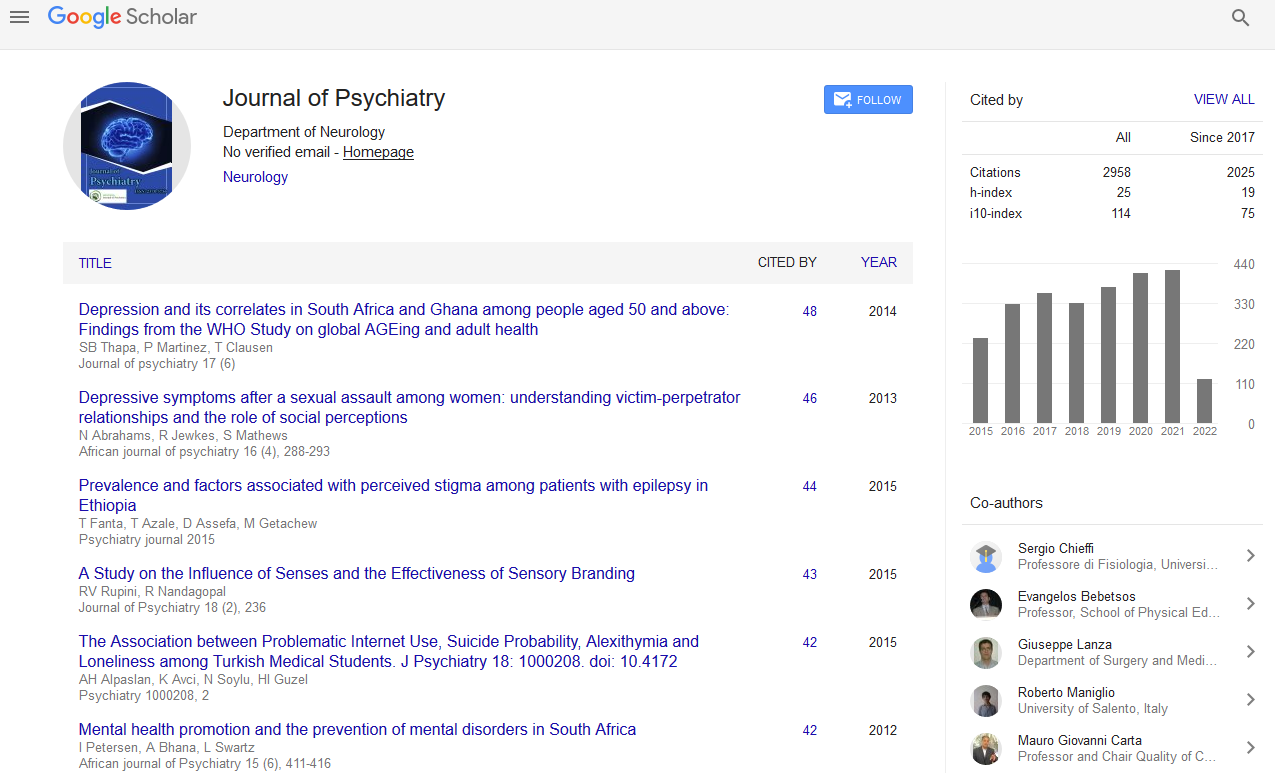PMC/PubMed Indexed Articles
Indexed In
- RefSeek
- Hamdard University
- EBSCO A-Z
- OCLC- WorldCat
- SWB online catalog
- Publons
- International committee of medical journals editors (ICMJE)
- Geneva Foundation for Medical Education and Research
Useful Links
Share This Page
Open Access Journals
- Agri and Aquaculture
- Biochemistry
- Bioinformatics & Systems Biology
- Business & Management
- Chemistry
- Clinical Sciences
- Engineering
- Food & Nutrition
- General Science
- Genetics & Molecular Biology
- Immunology & Microbiology
- Medical Sciences
- Neuroscience & Psychology
- Nursing & Health Care
- Pharmaceutical Sciences
Abstract
Screening for Distress in Cancer Patients: Performed by Whom?
Ezz El Din M, Abd El Ghany D and Elkholy E
Objective: The study was designed to evaluate the implementation of a screening procedure for distress and supportive care needs to patients who were attending the Clinical Oncology Department, Ain Shams University hospitals. The main aim was to gather descriptive information concerning distress levels and the number and type of difficulties encountered. Methods: The Distress Thermometer (DT) and a problem checklist (translated to Arabic) were administered to 248 recently diagnosed patients who were attending the department. Results: The study was conducted between November 2012 and June 2013, we completed DT sheets from 248 patients. The mean age was 53.8 years and the median value 56 years [range 27-80]. The male to female percentage was similar. The subjects presented three tumor locations: lung, genitourinary and mediastinal. The majority of the patients in our study (154 patients; 62.1%) had to be considered as exhibiting significant distress since they had a DTS equal to 4 or more. The problem list evaluation made it possible to identify the number of problems reported by each patient. In total, 74.2% of the patients reported practical problems, 93.5% physical problems, 29% family problems and 70.9% emotional problems. Religious problems were not reported by any of the patients. Difficulties and limitations were also described. Conclusions: This first clinical experiment conducted in an Egyptian cancer center has provided evidence that a considerable degree of distress is present in patients warranting its routine implementation throughout the disease trajectory and appropriate training of the non-specialist professionals involved.


